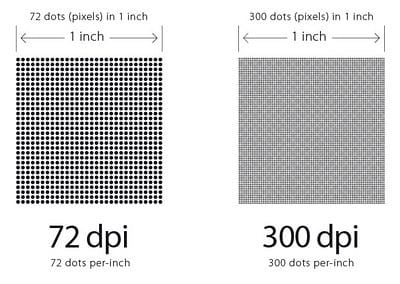Photo Resolution – by Jae Le
January 13th, 2011
Jae, our technical evangelist in the office, has gone from student to professor to ZenMaster. Some of you may know him from our video tutorials or met him at one of the recent trade shows. Jae has agreed to share some of his expertise with us.
Photo Resolution
People often ask me how big a digital image needs to be for printing. This is a very relative question, based on variables such a print quality and viewing distance. But I’ll try and answer it first on the basic level of resolution.
First off, I want to make it clear that we are not talking about file byte size. We cannot judge an image based off the file byte size, since most image files are often compressed. But we can judge an image based on the total number of pixels that make up an image, which can be determined by the height multiplied by the width of the image in pixels. These pixel dimensions are usually measured in megapixels.
So how do we measure height and width? When you hear people talking about photo “resolution” they often use terms like DPI (Dots Per Inch) and PPI (Pixel Per Inch). DPI is a physical measurement for photographs, because dots have an actual size. You can see the size of the dots if you look carefully at photo printed out, or an image generated on a computer screen. PPI is a virtual measurement used for digital images. This is because pixels are points in space we define mathematically, adding informational characteristics to such as color and contrast. They have no actual size or physical characteristics until converted to something real, such as a dot of ink or colored light on a computer screen.

Now that we have made this clear, it’s easy to understand why most people do not talk about digital images in terms of PPI. They usually only refer to pixel dimensions. This is because you can’t mathematically assume there will be a specific number of pixels in an inch. You simply can’t. They are relative points in space! The concept of “per inch” can really only apply to a physical entity, such as a dot. Thus DPI resolution.
The lab Mpix uses photo imaging equipment that will print with a minimum resolution of 100 DPI. It’s important to understand this is a minimum for the printing equipment, not necessarily a generally accepted minimum for a visually pleasing printed image. That standard is considered to be 300 DPI.
At 300 DPI the eye at an average small photo viewing distance stops distinguishing between dots and creates a resulting shape. Computer monitors were found to work well at a minimum of 72 DPI, Newspaper text at 125 DPI, and more recently 600 DPI has become more of a photography printing standard. But for over a decade we have thought of 300 DPI to be a visual minimum for printing a standard photo.
Think back to 2002 when digital cameras first came out and the resolution they could produce was a whopping 2.1 megapixels. Come to think of it, this was also a standard until recently for webcams and the camera built into phones. Why 2.1 megapixels?
The answer is easy. Most pictures are printed out with at 300 DPI on 4”x6” photographic paper.
300 DPI multiplied by 4 inches + 300 DPI multiplied by 6 inches
(300×4)x(300×6)=1200×1800=2,160,000 pixels or 2.1 megapixels when rounded down.
So to answer the question of how big a digital image needs to be for printing, I recommend a minimum printing quality of 300 DPI for any 4”x6” print, which means the pixel dimensions of around 1200×1800 or 2.1 MP. Some may want to take this information and extend it out to larger sized images:
For 4”x6”: 2.1 MP (1200×1800=2,160,000 pixels)
For 10”x12”: 10.8 MP (3,000×3,600=10,800,000 pixels)
For 16”x24”: 34.5MP (4,800×7,200=34,560,000 pixels)
For 24”x36”: 77.7 MP (7,200×10,800=77,760,000 pixels)
While you could use these numbers, I’d stop at 10”x12”, which is close to an averaged sized paper. Remember at the start I said the answer was based on variables such a print quality and viewing distance. So on a screen, dots of light required only 72 DPI. Black ink text of a newspaper from an average reading distance was 125 DPI. We just said a small detailed color photo from an average viewing distance was 300 DPI.

So what about a large 24”x36” wall mounted photo printed with heavy color inks on canvas? I would be seen from quite a distance away and the dots making up the photo would be larger with less space between. I think the answer is relative when it comes to best perceived quality, but remember Mpix states they have a minimum printer requirement of 100 DPI.
Now forged Magic The Gathering cards, which are small and held closely to your eye, were often printed at 3000 DPI. Not that I ever accidently bought a forgery, or have ever played Magic the Gathering, or have even been to the Game Stop in San Francisco. I’m too busy counting pixels.


